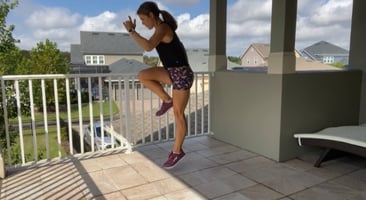I’m certain most people have heard of the term RICE before. In the past RICE was the go-to solution for injuries. RICE stands for
-
Rest
-
Ice
-
Compression
-
Elevation
But now it is known that resting is only effective for a short-term treatment to an acute injury.
It has been shown that if rest is done for too long you lose a lot of the fitness, strength and performance gains you have worked so hard to achieve. Not to mention, you lose the mental and emotional benefits that come with exercise, can we talk stress management and endorphins please?
Not only do you have these consequences of rest, but you increase the risk of reinjury because you never addressed the underlying root cause of the problem. Why does your tendon hurt? Why did you sustain a stress fracture?
Now, there is a definite time and place for rest, such as is the case in a stress fracture of a bone. But that doesn’t mean you just sit on the couch, binge Netflix, and return to running in 6 weeks when the bone has healed. There are so many ways to train around an injury it hurts my head!
Most injuries start off as a loading problem and will require load as the solution.
What has been found to be more beneficial to injury recovery than rest is to stay as active as possible in a way that is not painful. In the short term we want to modify the training to make pain as minimal as possible, and absent in the case of a bone stress injury. Staying active maintains blood-flow to the injured area, keeps your fitness at a certain level, maintains mood and maintains your sense of identity as an athlete and as part of a community.
After an initial period of load modification, you have to reintroduce load back into the equation. As Chris Johnson likes to say, “load is the problem and load is the solution.”
As you progress into the loading phase, a certain amount of discomfort is acceptable and even desirable to ensure you are getting enough stimulation to the tissue to create adaptations. This is where the guidance of a physical therapist can come into play. How much load? How often? When? A physical therapist can guide you through this process.
Working with a movement specialist and physical therapist can also help you find which movements your body can continue to do, as well as be your accountability partner to make sure you don’t lose your fitness as your specific injury does its thing. We can also analyze what put you in the position to get injured and help you find a solution so that injury does not happen again.
Exercise keeps your mood up and helps you be more patient with the process, allowing you to return to where you were before the injury, in an easier fashion.
Reintroducing load gradually allows you to confidently return to your sport or activity without fear of re-injury and oftentimes you can get back stronger than you were before.




